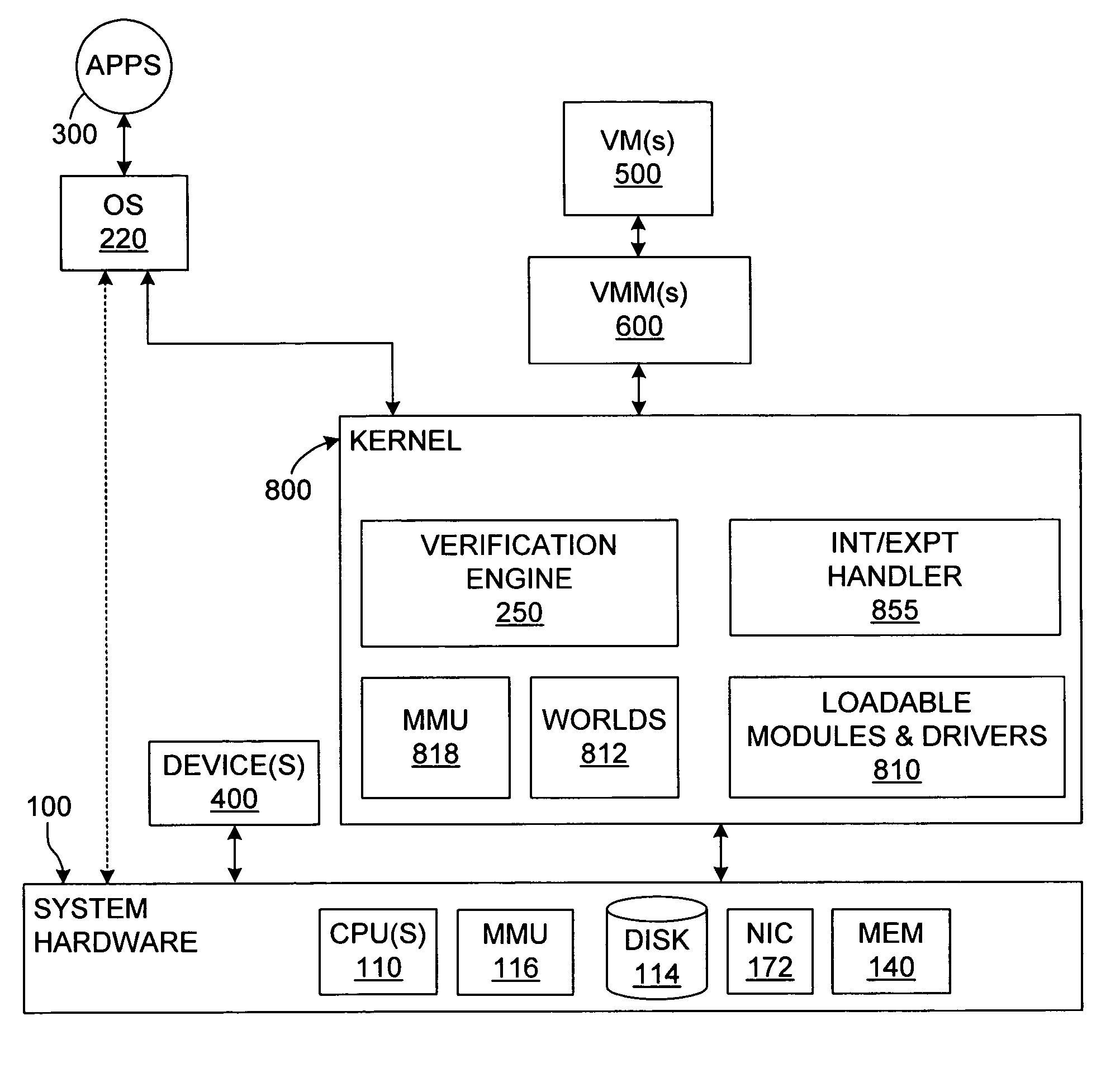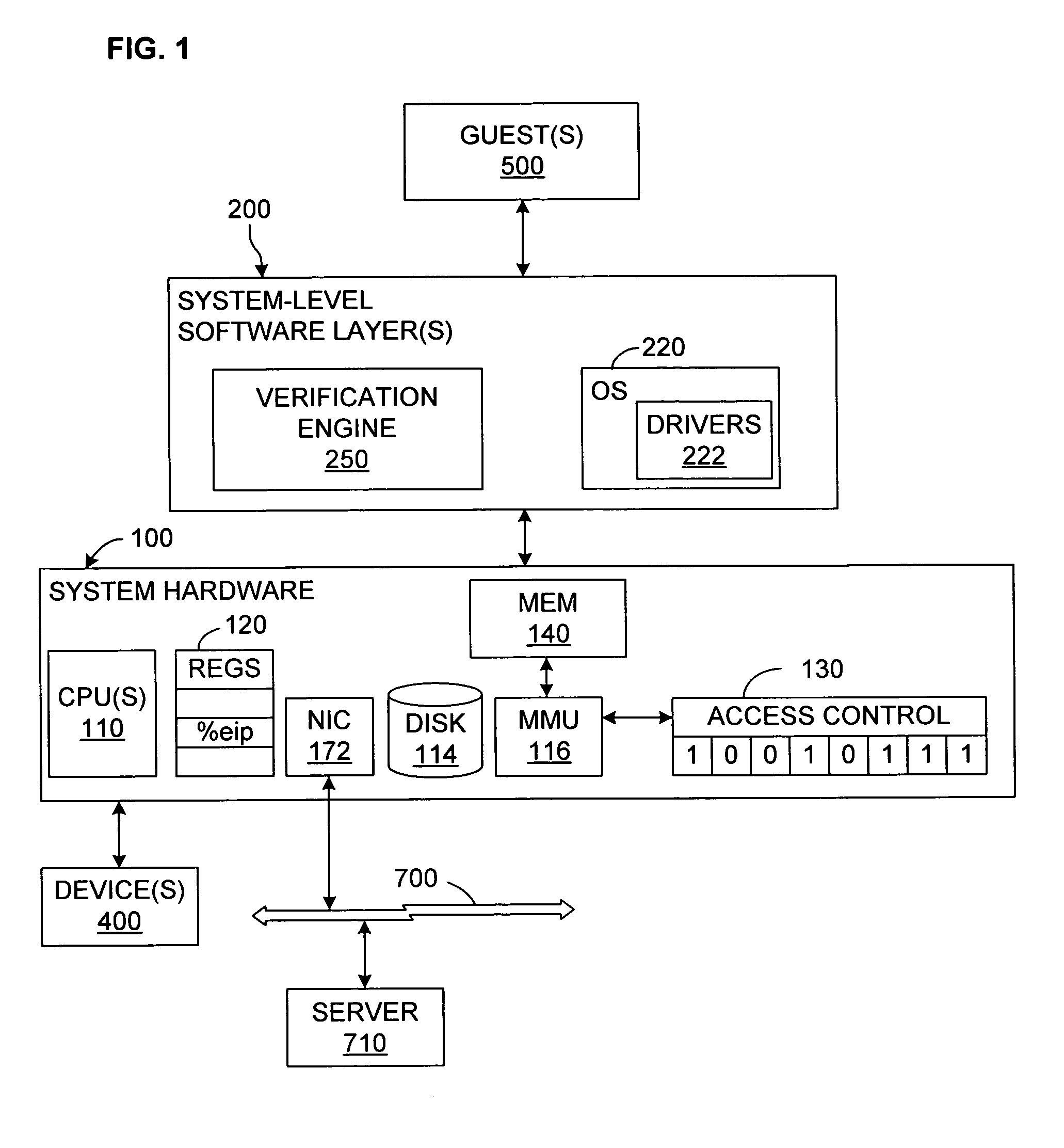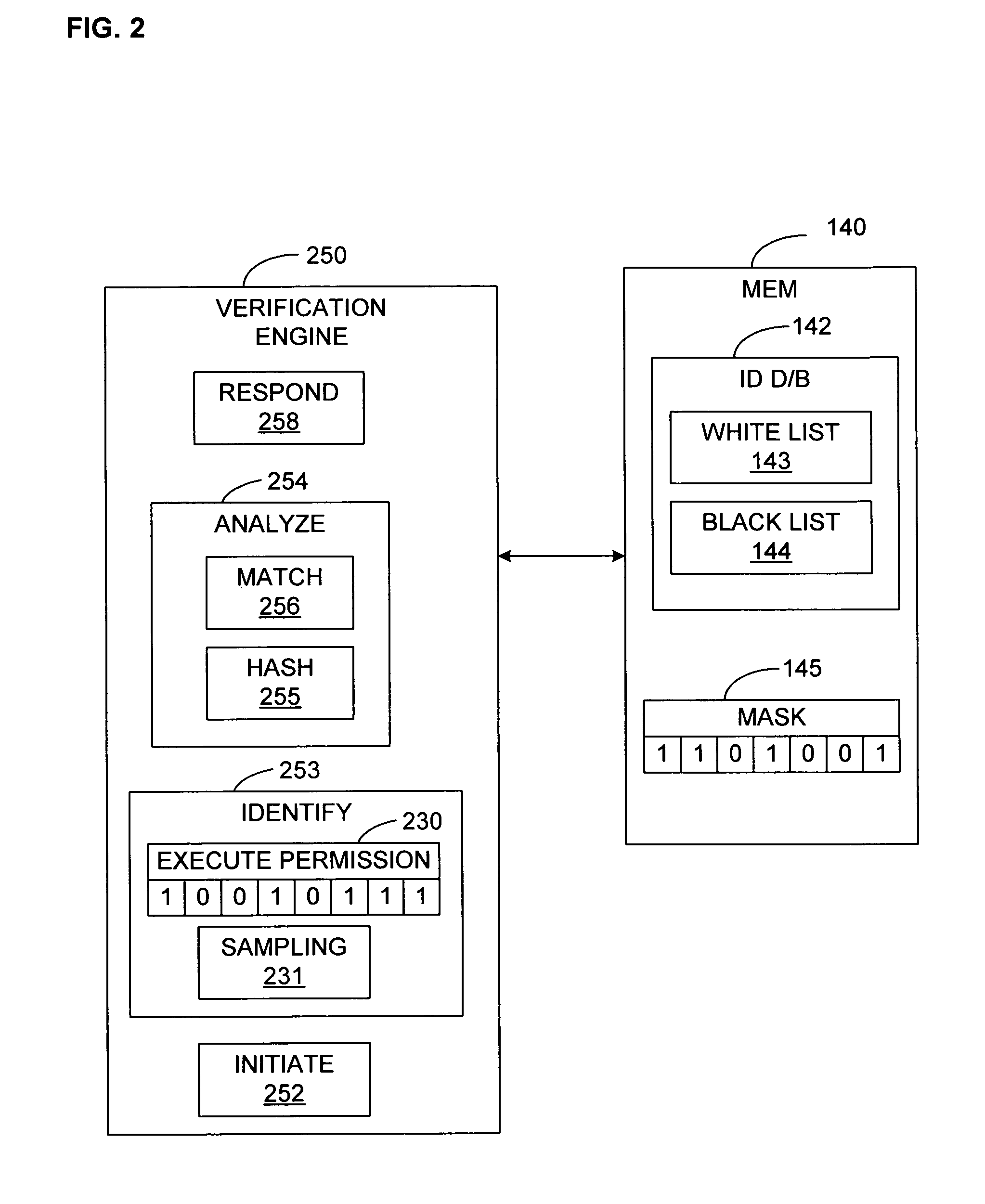Dynamic verification of validity of executable code
a technology of executable code and validation, applied in the field of computer security, can solve the problems of not being able to update (“patch”) faulty software, not being able to change, and being reactiv
- Summary
- Abstract
- Description
- Claims
- Application Information
AI Technical Summary
Benefits of technology
Problems solved by technology
Method used
Image
Examples
Embodiment Construction
Introduction
[0032]In broadest terms, the invention provides a system and method of operation for verifying the validity of code dynamically by comparing the contents of a unit (or sub-unit) of memory (such as a page) that contains code currently being executed, or scheduled to be executed, against one or more sets of information that distinguish permissible code from impermissible. The invention thus implements a “verify-before-execute” mechanism. The invention is not restricted to any particular hardware architecture, and may be incorporated to advantage in virtualized computer systems.
General System Configuration
[0033]FIG. 1 illustrates one example of a system in which the invention may be incorporated. A system hardware platform 100 includes one or more processors (CPUs) 110, system memory 140, and a storage device, which will typically be a disk 114. The system memory 140 will typically be some form of high-speed RAM, whereas the disk (one or more) will typically be a non-volati...
PUM
 Login to View More
Login to View More Abstract
Description
Claims
Application Information
 Login to View More
Login to View More - R&D
- Intellectual Property
- Life Sciences
- Materials
- Tech Scout
- Unparalleled Data Quality
- Higher Quality Content
- 60% Fewer Hallucinations
Browse by: Latest US Patents, China's latest patents, Technical Efficacy Thesaurus, Application Domain, Technology Topic, Popular Technical Reports.
© 2025 PatSnap. All rights reserved.Legal|Privacy policy|Modern Slavery Act Transparency Statement|Sitemap|About US| Contact US: help@patsnap.com



